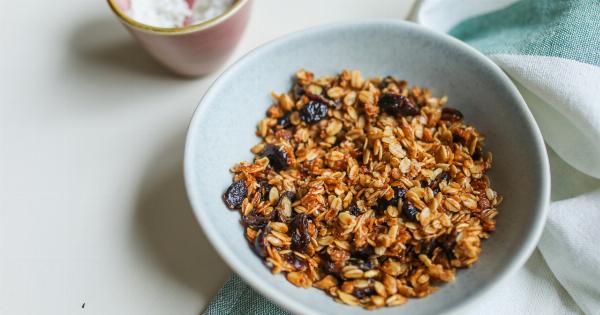Smoothies are a delicious and convenient way to consume fruits and vegetables. They make it easy to incorporate multiple servings of these nutrient-dense foods into your daily diet.
However, when it comes to the number of fruit servings to add to a smoothie, there are a few factors to consider. In this article, we will explore the recommended servings of fruit to include in your smoothies to ensure you are getting the maximum nutritional benefit.
The Importance of Fruit in Smoothies
Fruits are powerhouses of essential vitamins, minerals, antioxidants, and dietary fiber. They offer a variety of health benefits, such as boosting immune function, supporting heart health, improving digestion, and promoting healthy skin.
Smoothies provide an excellent medium for incorporating fruits into your diet. They allow you to blend different fruits together, creating a flavorful and nutrient-packed beverage.
However, it is essential to strike a balance between the number of fruit servings and other ingredients to avoid excessive sugar intake.
Dietary Guidelines for Fruit Consumption
The United States Department of Agriculture (USDA) recommends consuming 1-2 cups of fruits per day, depending on age, sex, and level of physical activity.
These guidelines aim to ensure individuals meet their nutritional needs and reduce the risk of chronic diseases.
Fruit Servings in a Smoothie
The number of fruit servings you should add to your smoothie depends on the overall calorie and sugar content you are aiming for.
1. Light and Low-Calorie Smoothies
If you are watching your calorie intake or prefer a lighter smoothie, it is advisable to include one serving of fruit. This can be roughly equivalent to one medium-sized fruit or a half cup of chopped fruit.
Adding a single fruit serving not only keeps the calorie count in check but also allows you to incorporate other ingredients like leafy greens, protein sources, and healthy fats without overloading on calories.
2. Moderate Smoothies
For those seeking a more substantial smoothie, including up to two servings of fruit is acceptable. This could be two different fruits or double the amount of a single fruit.
Using two servings of fruit provides more natural sweetness and a greater diversity of flavors, making your smoothie more enjoyable.
However, be mindful of the total calorie content, particularly if you are trying to manage your weight or have specific dietary goals.
3. High-Calorie and Meal Replacement Smoothies
If you are using a smoothie as a meal replacement or have high-calorie requirements, you may consider adding more than two servings of fruit.
However, it is essential to balance this with other ingredients to ensure a well-rounded and nutrient-dense meal.
While fruits offer numerous health benefits, they are not the only component that makes a smoothie nutritionally balanced.
Adding sources of protein (such as Greek yogurt, tofu, or protein powder), healthy fats (such as nut butter, avocado, or chia seeds), and vegetables (such as spinach, kale, or carrots) can further enhance the nutritional profile of your smoothie.
Factors to Consider
When determining the number of fruit servings to add to your smoothie, there are a few additional factors to keep in mind:.
1. Personal Goals and Preferences
Your personal goals, such as weight management, athletic performance, or general health improvement, can influence the number of fruit servings you include in your smoothie.
Consulting with a registered dietitian or nutritionist can help tailor your smoothie to meet these goals.
2. Total Sugar Intake
Fruits contain natural sugars, which can contribute to the overall sugar content of your smoothie.
While these sugars are healthier than added sugars, it is still important to monitor your intake, particularly if you have diabetes or are following a low-sugar diet.
3. Nutrient Variety
It is advisable to include a variety of fruits in your smoothies to maximize the range of vitamins, minerals, and antioxidants you receive.
Different fruits offer distinct health benefits, so experiment with combinations to create a diverse and nutritious blend.
Conclusion
Incorporating fruits into your daily diet through smoothies is a fantastic way to boost your intake of essential nutrients.
The number of fruit servings to include in your smoothie primarily depends on your calorie needs, sugar intake goals, and personal preferences. By striking a balance between fruits, vegetables, protein, and healthy fats, you can create a well-rounded, delicious, and nutrient-dense smoothie to support your overall health and wellness.































